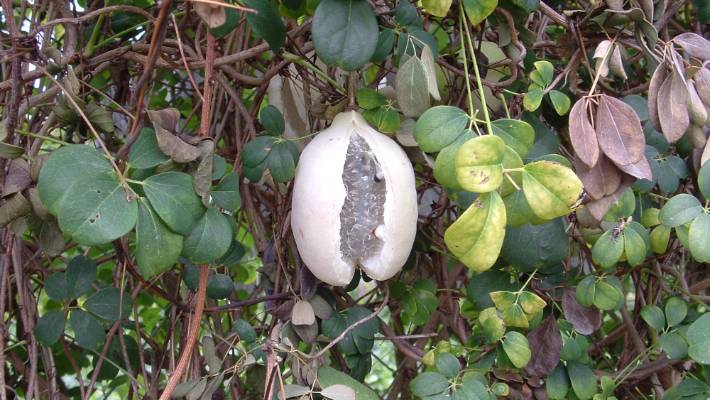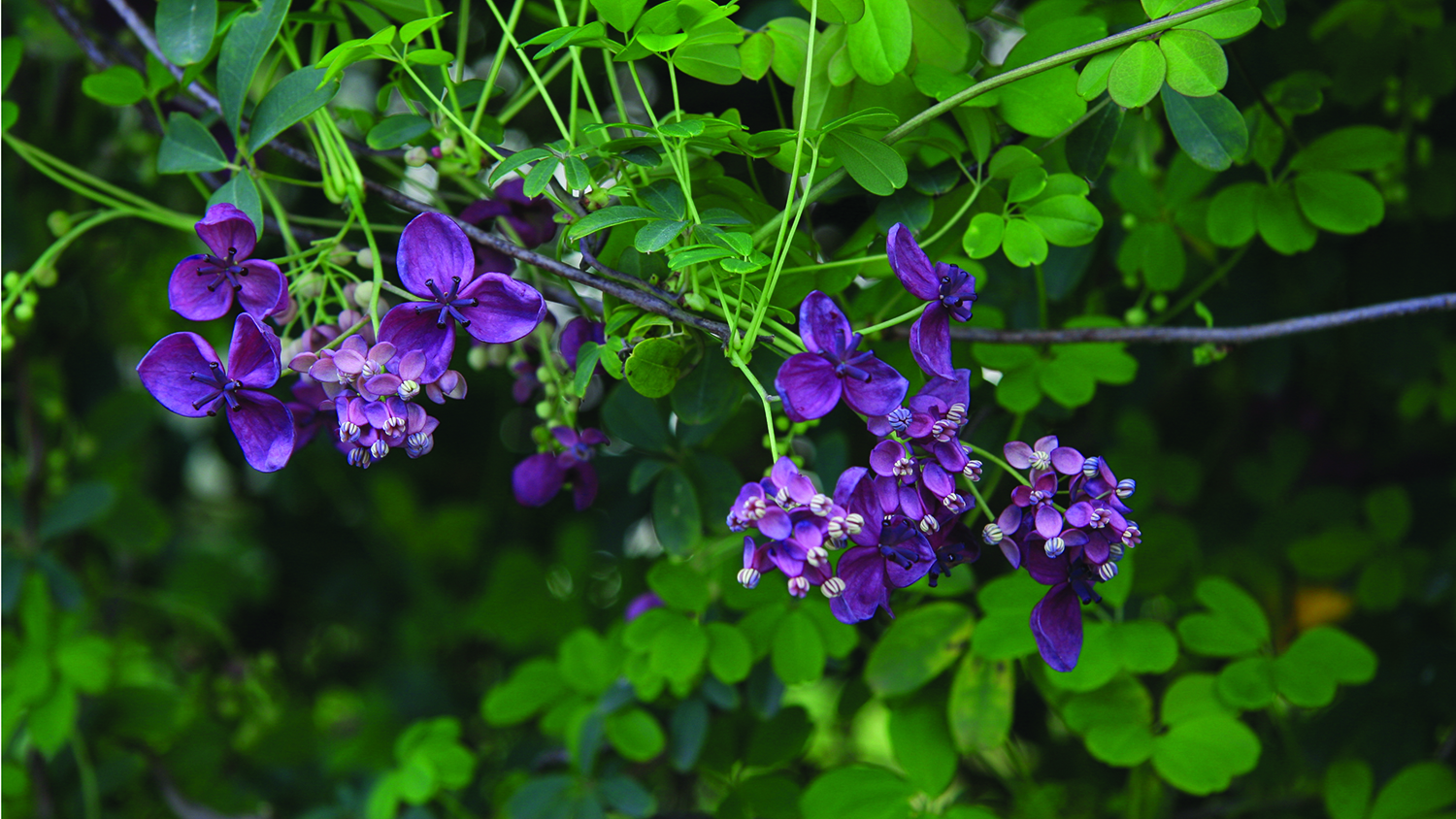| Management programme |
| Progressive containment |
| Objectives |
| Reduce the amount of chocolate vine and limit the locations that have it within the Waikato region. |
| Impacts |
| Biodiversity, social and cultural wellbeing |
Chocolate vine is a fast-growing deciduous, twining vine or groundcover native to Central China, Korea and Japan. Originally brought to New Zealand as an ornamental garden vine it has now spread from home gardens into other areas of the region.

What does it look like?
Chocolate vine is scrambling ground cover or climbing vine to 20m tall.
Flower
- Vanilla or chocolate-scented, chocolate-purple flowers (25mm across).
- Flowers are 2.5cm in diameter and hang in 5cm-10cm long clusters of 6-8 flowers.
- Flowers present in spring.
Fruit/seeds
- Purple coloured flattened sausage-shaped seed pods 8cm-9cm long with whitish seed pulp.
- Fruit ripens in late summer to autumn.
- Pulp contains many tiny black seeds which are dispersed by birds.
Leaves/stems
- Many slender green stems which turn brown when mature.
- Each leaf is made up of five oval leaflets (3cm-7.5cm long), combining to form a ‘hand-shaped’ leaf on a long stalk.
- Compound leaves are alternative along the stem.
- Leaf colour changes from green with a purplish-tinge to blue-green at maturity.
Why is it a pest?
Chocolate vine grows very rapidly, forming a thick, tangled mat that can overwhelm and out compete desirable plants. Without something to climb up it can grow into a thick groundcover. Once established it prevents seed germination and smothers seedlings, stopping the regeneration of native plants.
Spread is most often vegetative via fragments of stem that can readily take root. Human-mediated spread can occur through mowing, soil movement and dumping of garden waste. It can also be dispersed by birds that eat the fruit, dispersing the seeds.
Chocolate vine tolerates a wide range of environmental conditions (from full sun to shade, drought and frost, and a range of soil types), although it prefers partial shade on well drained moist soils. It can establish along roadsides, in scrub, along forest margins and in hedges.
Control methods
Physical control
Dig out small vines and any seedlings at any time of the year, taking care to get all the roots. Dispose of in black garbage bags to a lined landfill. Do not compost or leave lying where they can take root again. Follow this up regularly until no more seedlings come up then replant with preferred species.
For larger plants, cut the vine stems off at ground level and repeat when they regrow. Tie off hanging vines in the canopy so they cannot touch the ground and revegetate. Once growth has died back, dig out root systems and dispose of carefully to lined landfill. Repeat the process until all signs of regrowth have gone.
Herbicide control
Cut and paste
Cut stems at ground level and apply immediately with glyphosate or picloram gel to both ends. This method is most suitable with large vines where the risk of damaging desirable plants is high.
Spray application
Overall spray application using triclopyr or triclopyr/picloram mix. You can also spray glyphosate in spring or summer spray at 300ml/15L water, or use triclopyr at 60ml/10L water plus penetrant. Totally cover the leaf surface with herbicides. This method is most suitable for larger vines where the level of risk to desirable plants is low.
Safety when using herbicides
- Follow the instructions on the manufacturer’s label.
- Always wear protective clothing.
- Always minimise the risk to your other plants.
- Contact the supplier for further advice.
Disclaimer: Any product names mentioned below are not an endorsement nor are they a criticism of similar products not mentioned.
Summary of herbicides and application methods for control
| Herbicide | Application |
| Glyphosate | Cut and paste treatment. Spray application. |
| Triclopyr | Spray application. |
| Triclopyr/picloram mix | Cut and paste treatment. Spray application. |
| Picloram or glyphosate gels | Cut and paste treatment. |
| Herbicide rules will apply. You may need to notify neighbours if spraying. The Waikato Regional Plan explains the agrichemical (herbicides) use rule in section 6.2 | |
More information
Advice
For additional information and advice on chocolate vine, call our pest plant staff on freephone 0800 800 401.
Publications
The following publications are available for download or from Waikato Regional Council. Contact us to request a copy (freephone 0800 800 401).








To ask for help or report a problem, contact us
Tell us how we can improve the information on this page. (optional)